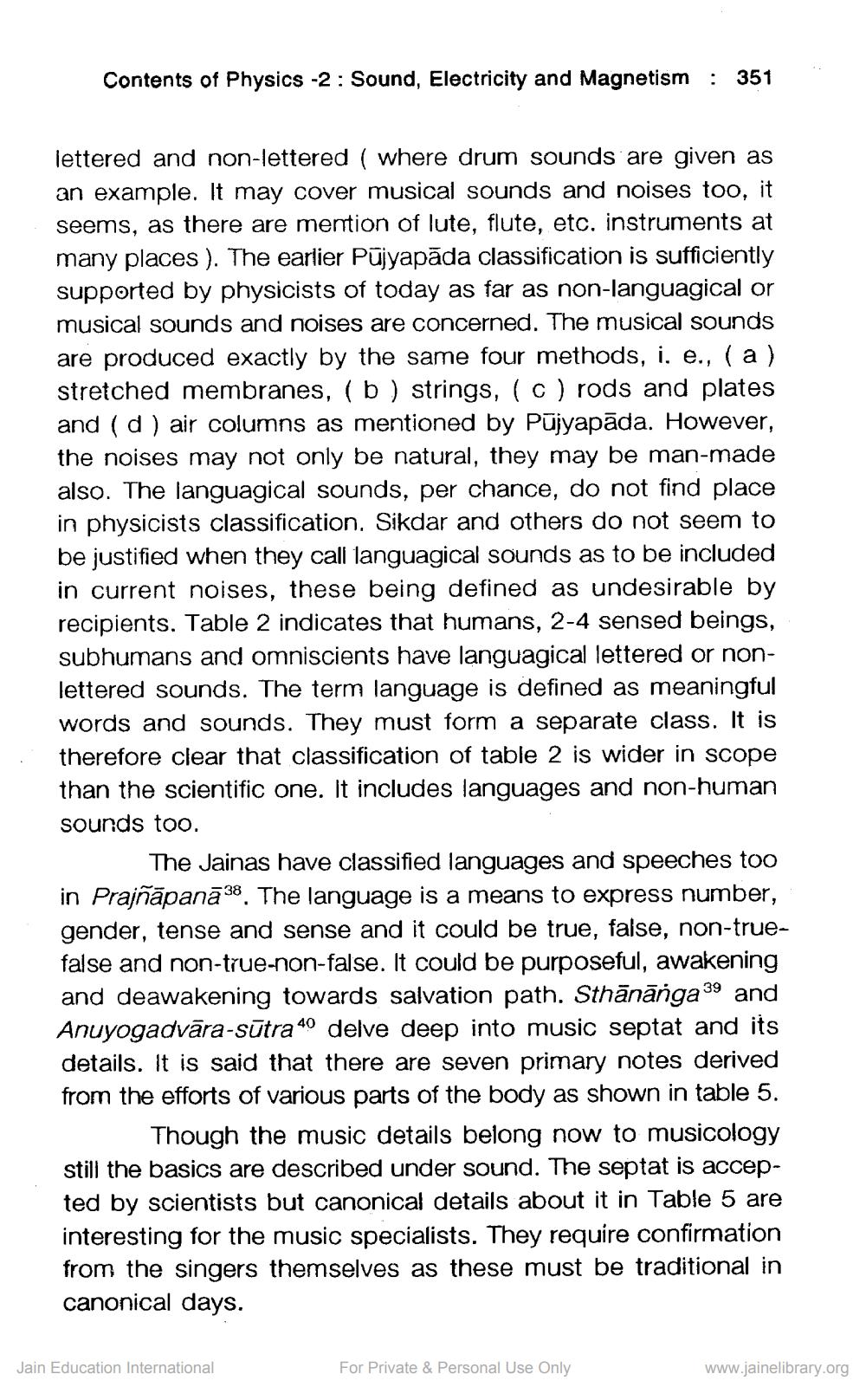________________
Contents of Physics -2: Sound, Electricity and Magnetism
: 351
lettered and non-lettered ( where drum sounds are given as an example. It may cover musical sounds and noises too, it seems, as there are mention of lute, flute, etc. instruments at many places ). The earlier Pūjyapāda classification is sufficiently supported by physicists of today as far as non-languagical or musical sounds and noises are concerned. The musical sounds are produced exactly by the same four methods, i, e., (a) stretched membranes, (b) strings, (c) rods and plates and (d) air columns as mentioned by Pujyapāda. However, the noises may not only be natural, they may be man-made also. The languagical sounds, per chance, do not find place in physicists classification. Sikdar and others do not seem to be justified when they call languagical sounds as to be included in current noises, these being defined as undesirable by recipients. Table 2 indicates that humans, 2-4 sensed beings, subhumans and omniscients have languagical lettered or nonlettered sounds. The term language is defined as meaningful words and sounds. They must form a separate class. It is therefore clear that classification of table 2 is wider in scope than the scientific one. It includes languages and non-human sounds too.
The Jainas have classified languages and speeches too in Prajñāpanā 38. The language is a means to express number, gender, tense and sense and it could be true, false, non-truefalse and non-true-non-false. It could be purposeful, awakening and deawakening towards salvation path. Sthānānga 39 and Anuyogadvāra-sūtra 4o delve deep into music septat and its details. It is said that there are seven primary notes derived from the efforts of various parts of the body as shown in table 5.
Though the music details belong now to musicology still the basics are described under sound. The septat is accepted by scientists but canonical details about it in Table 5 are interesting for the music specialists. They require confirmation from the singers themselves as these must be traditional in canonical days.
Jain Education International
For Private & Personal Use Only
www.jainelibrary.org




